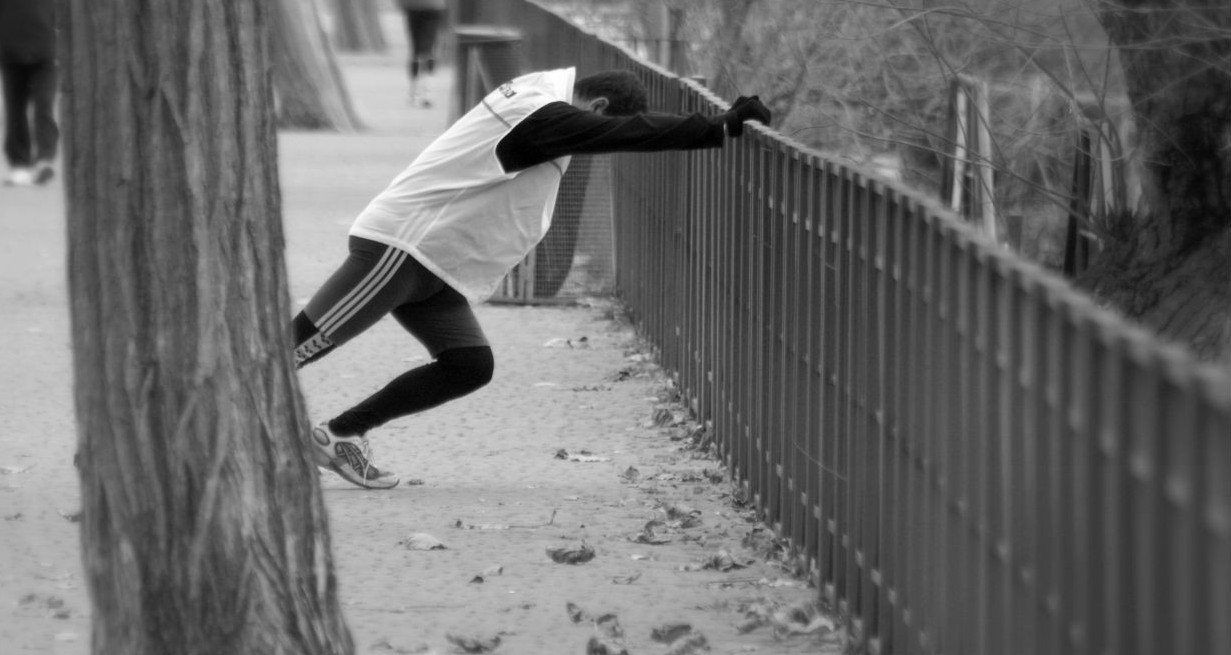Why do we need to stretch?
We shouldn’t think of stretching in terms of gaining increased flexibility in a muscle, but use stretching to facilitate mobility in muscle chains, to improve our posture and our quality of movement. As you know from using the reformer, there isn’t really an exercise when we isolate a particular muscle; instead we encourage the strength and development of whole muscle chains. This is the way the body was designed. The age of pumping iron of the 80s with the tight spandex gear and mullet hairstyle is over and so too is the use of fixed machines and isolating exercises. Similarly, a change in the way we perceive stretching is developing. Implementing stretching to lengthen a chain of muscles that has shortened over time causes over lengthening of the opposing muscles, leading to muscular imbalances over that part of the body. Such imbalances are the cause of bad posture and chronic aches and pains.
Giving you a classic example of a typical modern day imbalance, take the hip complex and, in my opinion, the worst invention ever spawned by the human race…the chair. Sitting for long periods of time causes the shortening and therefore over lengthening of different opposing muscles.
Simplifying the imbalance that occurs, the 2 muscle chains we are looking are the anterior and posterior (front and back). When sitting, you may notice that you close off by hunching over your computer, so the muscles of the anterior chain (front) progressively shorten over time. Consequently, the muscles of the posterior chain are lengthened. This imbalance is the basis for a whole heap of potential problems, going beyond the scope of this article.
So, we should use stretching to balance out the body from imbalances as common as this one to bring the body back to neutral and pain free. At Bootcamp Pilates this is what we attempt to do with our clients. But of course, in a group dynamic we have 10 different people with varying imbalances to cope with and although generally they can be similar, if you want a more specific approach to you we offer 1 on 1 sessions with your favourite trainers for extra tuition to get your body back in alignment as well as shape.
Now we know how and when we should stretch, we will be looking at for how long and which stretches are most beneficial.
A whole heap of studies have be done on the length of time for stretching with the majority of them agreeing the most productive range of time to mobilise and stretch for is between 30 seconds and 2 minutes, long enough to forces change in the tissue. 2 minutes per mobilisation would be the most beneficial, whereas if you’re short on time, 30 seconds at least is better than nothing.
As we said before, we want to lengthen the chains of muscles that are adaptively short and not lengthen the chains that are already too long. The following mobilising stretches are based at the general demographic and will work towards improving the posture of most people.
To achieve balances, remember you not only need to lengthen muscles on one side of the chain but strengthen on the other. So, when is the next time you’re going to come to a class and strengthen your weak chains?
Next time you see me, let me know how you got on with these top mobilising stretches:
Heart Opening Stretch
What is it good for?
Great for lengthening the muscles which close the chest and lengthening the muscles at the front of the hip and for opening the upper back.
Top tips
We want an even stretch up and down the body. Avoid an accentuated arch in the lower back with this exercise and make the shoulders wide throughout, to avoid pinching the front of the shoulder. Up to 2 minutes.
Hip Flexor Stretch
What is it good for?
Painful but very rewarding, lengthens the muscles of the front of the leg and hip along with widening the shoulders and opening the upper back.
Up to 2 minutes both sides.
Top tips
We can rock back and forward with this stretch making sure we squeeze the butt to push the hip forward and avoid overarching the lower back.
Downward Dog
What is it good for?
Great lengthening the muscles of the back of the leg, hamstrings and calves, along with opening the front of the shoulders and developing core strength.
Top tips
Have hands wide enough apart so the shoulders can feel a stretch without shrugging. Keep heels down and push hips backwards. Up to 2 minutes.
Elevated Pigeon Pose
What is it good for?
Excellent stretch for the side of the hip, a hotspot for tightness in most people. Lengthening the muscles of the front of the hip on the back leg.
Top tips
Knee and hip at 90 degrees, establish stretch, push hip outwards to the side and then lean forwards towards bent knee, while maintaining a long spine. Up to 2 minutes both sides.
Lying Windmill
What is it good for?
Best for those who are tight in their upper back and shoulders and people with neck injuries.
Top tips
Begin in a side lying position with a pillow to support neck. Keep hips still while reaching your fingers towards the ceiling and allow gravity to draw shoulder towards the floor. Look at the hand at all times. Your shoulder shouldn’t poke forward. This stretch should most be felt in the upper spine.
15 slow repetitions with deep breathing each side.
When stretching or mobilising it is important to understand your level of the exercise itself. Pushing the body too far will lead to compensation, in which at best you may shift the emphasis of your intentional stretch, or worse, hurt yourself.
James Woodhouse has a laid-back – if highly active – approach to life, believing that if you take care of your health, everything else will follow. Ever since he was an overactive kid he’s wanted to keep moving, taking part in everything from football to hiking. James teaches the notion that the human body should be able to function for more than 100 years, making all the niggles that can appear in early middle age totally preventable. By practicing movement with good technique, he thinks we can live a pain-free life – and even attain that much-wanted six-pack.
For more information and to follow James’ blog visit www.jameswoodhousefitness.co.uk








